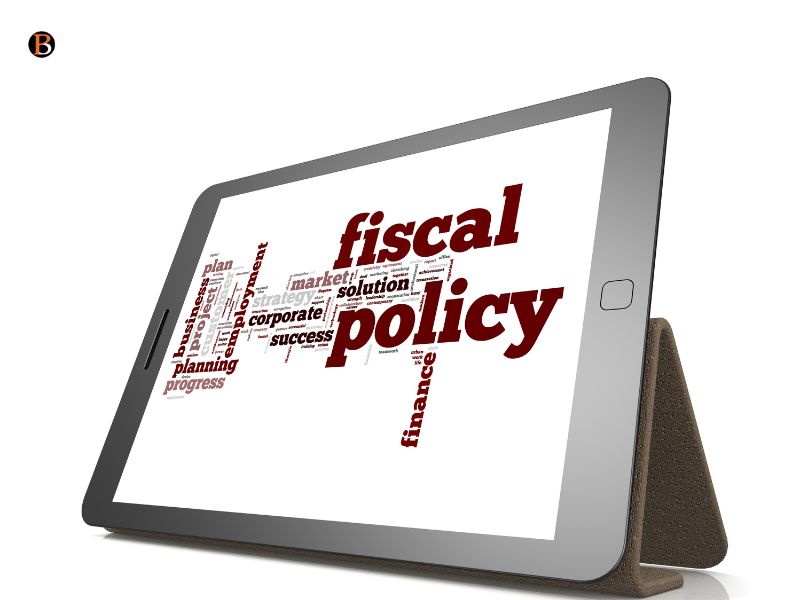.png)
Budget Balances Fiscal Discipline With Inclusive Growth
The Union Budget 2025-2026 focuses on fiscal discipline, infrastructure development, and middle-class tax relief to drive sustainable growth. With reforms in FDI, social security for gig workers, and green energy investments, the budget aims to boost economic resilience while fostering inclusive development. Its balanced approach seeks to propel India towards a self-reliant and competitive future.


Alok Kumar Mishra is a professor at the University of Hyderabad, researching financial economics and public policy.
February 1, 2025 at 3:58 PM IST
Finance Minister Nirmala Sitharaman's Union Budget 2025 outlines a plan for equitable development, sustainability, and economic growth in India. The budget seeks to boost economic activity while upholding fiscal restraint, focusing on social security, infrastructure, tax reforms, and job creation. The government's commitment to encouraging investment, enhancing business-friendly conditions, and solidifying India's standing as a major economic force globally is reflected in the budget.
The main points and their anticipated economic impact are listed below.
Infrastructure Development: Laying the Foundation for Growth
With large investments in roads, railways, urban transportation, and digital connectivity, infrastructure remains a primary concern. In addition to allocating funds for key transportation corridors, metro projects, and smart cities, the government has extended the National Infrastructure Pipeline (NIP).
Economic Impact:
- Better connectivity will increase trade and commerce by lowering transportation costs.
- Thousands of jobs will be created through infrastructure development, especially in construction and related industries.
- Projects for improved urban mobility will reduce traffic congestion and cut down on travel time, enhancing productivity.
Tax Reforms: Relief for the Middle Class
The budget introduces a revised personal income tax structure to provide relief to the middle class while boosting consumption and savings. The new tax slabs are:
- 0 to ₹400,000: No tax
- ₹400,001 to ₹800,000: 5%
- ₹800,001 to ₹1.2 million: 10%
- ₹1.2 million to ₹1.6 million: 15%
- ₹1.6 million to ₹2 million: 20%
- ₹2 million to ₹2.4 million: 25%
- Above ₹2.4 million: 30%
Economic Benefits Compared to the Old Tax Regime:
- Increased disposable income: Middle-class earners benefit significantly from
the updated tax slabs, enabling more savings and spending. - Rise in consumption: Household consumption is expected to increase due to reduced tax burdens, fuelling demand in sectors like retail, real estate, and automobiles.
- Higher savings and investments: Lower tax rates will encourage people to invest in financial products such as mutual funds, fixed deposits, and insurance.
- Simplified tax compliance: The streamlined structure broadens the revenue base by reducing complexity and promoting greater tax compliance.
- Support for economic growth: Increased investments and spending by taxpayers will stimulate overall economic growth and job creation.
Fiscal Discipline: A Commitment to Stability
With a goal of reducing the fiscal deficit to 4.4% of GDP by 2025-2026, the target for 2024-2025 has been set at 4.8%. The government aims to maintain growth momentum while achieving fiscal consolidation.
Economic Impact:
- Macroeconomic stability is ensured through a controlled budget deficit, reducing inflationary pressures.
- Increased investor confidence will attract both domestic and foreign investments.
- Lower borrowing requirements will help stabilise interest rates and encourage private sector investments.
Investment and FDI Reforms: Expanding Economic Opportunities
To attract more foreign investment, the government has increased the FDI cap in the
insurance sector from 70% to 100%. New incentives for MSMEs, start-ups, and the
manufacturing sector aim to encourage innovation and entrepreneurship.
Economic Impact:
- Higher FDI will fund business growth and innovation.
- Support for start-ups and MSMEs will boost employment and enhance industrial competitiveness.
- A more liberalised investment framework will make India more attractive for international businesses.
Social Security and Employment Generation
The introduction of a Social Security Scheme for gig workers ensures financial stability
for the rapidly growing informal workforce. This includes mandatory platform
contributions and government co-funding for social security benefits.
Economic Impact:
- Financial security for gig workers will reduce income inequality and social vulnerability.
- Formalisation of gig employment will improve job stability and economic inclusion.
- Increased disposable income in this segment will spur consumption and demand.
Urban Development: Strengthening Tier-II Cities
To guide urban planning and investment in emerging urban centres, a National
Framework for Tier-II Cities has been introduced. States will be encouraged to
implement sustainable urban development projects under the Urban Challenge Fund.
Economic Impact:
- Balanced urbanisation will promote regional development and ease pressure on major cities.
- Improved urban planning will enhance the liveability and economic efficiency of smaller cities.
- Investments in Tier-II cities will attract businesses and create new job opportunities.
Tourism and Hospitality: Employment-Driven Growth
Recognising tourism as a key employment generator, the government has introduced visa fee waivers, hospitality training programmes, and performance-linked incentives for states to promote tourism infrastructure.
Economic Impact:
- Growth in tourism will generate jobs in hospitality, transport, and local businesses.
- Enhanced global branding will attract more foreign tourists, boosting foreign exchange reserves.
- Investments in cultural and heritage tourism will preserve and promote India’s rich legacy.
Education and Knowledge Economy: Building Human Capital
The budget introduces the Gyan Bharatam Survey to assess educational infrastructure and the National Depository for Knowledge to consolidate academic resources.
Economic Impact:
- Improved educational quality will prepare the workforce for emerging industries.
- Access to a centralised knowledge depository will promote research and innovation.
- Investments in skill development will boost employability and workforce efficiency.
Green Economy and Renewable Energy
The budget reinforces India's commitment to climate action and green energy, with increased allocations for solar power, EV incentives, and sustainable urban planning.
Economic Impact:
- Enhanced renewable energy capacity will reduce dependence on fossil fuels, ensuring long-term energy security.
- Green urban initiatives will lower carbon emissions and improve environmental sustainability.
- Job creation in the renewable energy sector will support employment in high-growth industries.
This budget aims to make India more robust, sustainable, and inclusive. The Union Budget 2025-2026 takes proactive steps to empower key stakeholders across sectors, promote economic resilience, and support sustainable development. From tax relief for the middle class to increased infrastructure spending, the budget seeks to balance fiscal constraints with growth objectives. By placing strong emphasis on social security, job creation, urban development, and ease of doing business, the budget lays the foundation for India to emerge as a self-reliant, competitive, and sustainable economy. These policies will ensure that growth benefits all sections of society, paving the way for India to enter a new era of economic prosperity.



